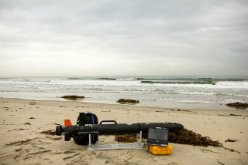
Research Interests
My interest in computers can be traced back to 2000, where as a freshman in high school, I was selected as one of seventy-five students from the United States to participate in an all-expenses paid trip to the University of Washington's Seattle campus to take part in Teen TechFest 2000, a computer summer camp sponsored by Microsoft and ACEplanet.com. There, I interacted with like-minded students who enjoyed building their own computers and excelled at computer programming. I learned that electrical engineering or computer science were the fields from which I should seek to earn a degree and focus my research interests. As the valedictorian of Murdock High School's Class of 2003, having completed an independent study focused on computer information technology, I stepped foot onto Worcester Polytechnic Institute (WPI)'s campus determined to learn more about both fields.
At WPI, I competed on the field as the captain of the Track & Field throws squad. In the laboratory, I was the team leader and primary presenter of the automatic optical garage door opening system design project. In Ireland, at the University of Limerick (UL)'s Enterprise Research Centre (ERC), I was the project manager and lead software architect for the design of a personal health monitor interface for wireless data logging. Graduating with distinction in May of 2007, I relocated to Middletown, RI to take up employment in the Combat Systems Department of the Naval Undersea Warfare Center (NUWC).
At NUWC, I began my career by developing a simple algorithm to account for positional error in recorded data on an open-loop speed controlled autonomous underwater vehicle (AUV). By calculating the total error accumulated between Global Positioning System (GPS) anchored surface waypoints on a straight-line track, I was able to interpolate the approximate underwater position of each data point. This small project provided me with the opportunity to observe and participate in oceanographic sampling research at Middlebury College. I helped to collect 106 discrete Conductivity Temperature Depth (CTD) casts in Lake Champlain and examined the utility of the OceanServer Iver2 AUV as a water column sampler. Our team, under the guidance of Dr. Mike Incze (NUWC), validated the use of the AUVs as a viable platform for environmental data collection and NUWC purchased three vehicles under its Capital Investment Program (CIP) shortly thereafter.
I would take on the role as the primary vehicle operator, backseat driver software developer, and hardware integrator on the OceanServer Iver2 platform. I developed and maintained the Mission Oriented Operating Suite (MOOS) compatible interface to the backseat driver, iOceanServerComms, under the guidance of Dr. Don Eickstedt. I later presented this work at OCEANS '09 MTS/IEEE Biloxi and later published it in the July/August 2010 edition of the MTS Journal. Work with Dr. Eickstedt also exposed me to the Laboratory for Autonomous Marine Sensing Systems (LAMSS) at MIT and provided me with the opportunity to participate in Anti-Submarine Warfare (ASW) focused science cruises (e.g. GLINT '08, GLINT '09) where NUWC's Iver2 AUVs participated in the collaborative, cooperative autonomy experiments. I also supported Moving Long Base Line (MLBL) research by MIT's Marine Robotics Group with the SCOUT autonomous kayaks and the Iver2 AUV. Dr. Eickstedt and I also investigated adaptive sampling of the thermocline in the Mediterranean Sea by exploiting the flexibility offered by the Interval Programming (IvP) Helm. I would continue this research with other members of the LAMSS group back on Lake Champlain one year later. Today, this adaptive research has expanded to include the mapping of bathymetric contours of interest to the US Navy warfighter, particularly the submarine.
In parallel to this active engagement in marine autonomy research, I also continued exploring the operational utility of the Iver2 AUV with Dr. Incze through other multi-national NATO-sponsored exercises (e.g. BP '09, REP '10, and TS '11). Our efforts culminated in an Office of Naval Research's TechSolutions Program Office initiative to deliver mission-focused versions of the Iver2 AUV to the Naval Special Warfare (NSW) community. Dr. Incze would select me to be the Principal Investigator (PI) for the proposed autonomy behavior development under this one-year acquisition program; a designation I was particularly honored to hold given my youth and position as an entry-level engineer. Together, Dr. Incze and I oversaw the integration of new sensors onto the Iver2 platform. I also led the team that developed the novel hybrid autonomy behavior to conduct near shore survey missions safely by oscillating vehicle control between the backseat and frontseat drivers, depending on vehicle safety status. This work was presented at the MOOS Development & Applications Working Group (DAWG) 2010 meeting and is currently under review at NUWC for patent disclosure.